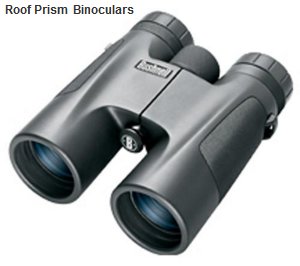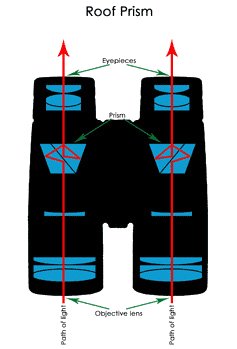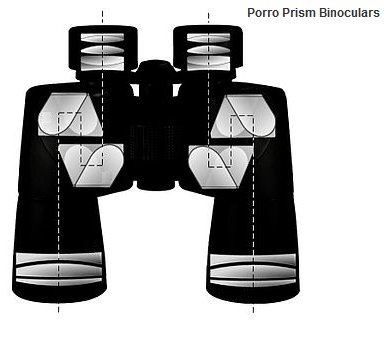Choosing the right Binoculars
You might think of binoculars as poor substitutes for a telescope, but binoculars are actually a very fine way of getting a better look at the night sky, and are the ideal instrument for beginners. They can be cheap, are very portable, are easy to use and a great way for learning your way around the night sky before you decide to upgrade to a telescope. In fact, you can think of binoculars as two small telescopes fixed together. Binoculars can also be used in conjunction with a telescope, as they can help you locate an object you're looking for before you zoom in with your telescope for a more detailed view.
Binoculars are usually marked with two numbers, for example, 10x50, or 7x40. The first number is the magnification as compared to the naked eye, hence a magnification of 10x is ten times larger than what the naked eye can see. The second number is the aperture, or the width of the front (objective) lens of the binoculars as measured in millimetres. The wider the aperture, the more light that can enter the binocular scopes, thus making fainter objects more visible. However, larger aperture binoculars also tend to be heavier and more expensive than ones with smaller apertures. And larger isn't always better. You may find that binoculars with magnification larger than 10X are difficult to use in your hands because the image in the eyepiece won't stay steady, so for magnifications of 10X or greater you may probably want to also invest in a sturdy pair of tripods. You may find some binoculars come with what's called "zoom magnification", but the images they produce tend to be poorer quality.
You would also want to check that the image coming out of your binoculars is a good one. The first thing to consider is the exit pupil, which is the size of the image coming out of your binoculars eyepiece, as measured in millimetres. A large exit pupil means a brighter image. To determine the exit pupil, divide the aperture (usually the second number) by the magnification (the first number), so for instance, a 10x50 pair of binoculars would have an exit pupil of 5mm. Remember that a dilated human pupil is on average 7mm across.
Ideally, for astronomical use, the aperture (second number) in millimetres should be at least five times greater than the magnification figure (first number). Binoculars with a smaller ratio than this would only be good for daytime use, as they would produce fainter images at night.
Binoculars also feature prisms that collect and direct light from the source to the eyepiece, and there are two main designs to choose from.
Compact Binoculars feature what are called "Roof Prisms", that allow a "straight through" light path, often resulting in a more compact design with straight barrels. However, the lenses are usually relatively small and are not the best choice for astronomy. 

In Standard binoculars, the path of light is folded by two prisms before it exits at the eyepiece. This design is usually referred to as a "Porro-Prism". Porro-Prism binoculars will inherently produce a brighter image than roof-prism binoculars of the same magnification, objective size, and optical quality, because the roof-prism design usually employs silvered surfaces that reduce light transmission by as much as 12% to 15%. Porro prism binoculars are named after Italian optician Ignazio Porro who patented this image erecting system in 1854.

The field of view of a good pair of binoculars is usually 3°to 5° (three to five degrees). This is equivalent to six to ten times the diameter of the moon. This is a good deal larger than the field of view of most telescopes, and makes it easy to scan large areas of the night sky at a glance. In addition, some objects are best suited to observation with binoculars, such as comets with long tails, scattered star clusters, and Milky Way star fields.
Finally, hold the eyepieces of the binoculars at a distance from your eyes and look at them. If the exit pupil image is squared off, the prism is too small for the binoculars and the image quality will be poor. Also look at the edges of the field of view in your binoculars; too much chromatic aberration (red and blue outlines) is a sign of inferior workmanship. Generally what you are looking for is a clear, sharp image, as opposed to one that's grainy, filmy or of low-contrast. It pays to shop around, and don't expect the best binoculars to be the most expensive ones either!